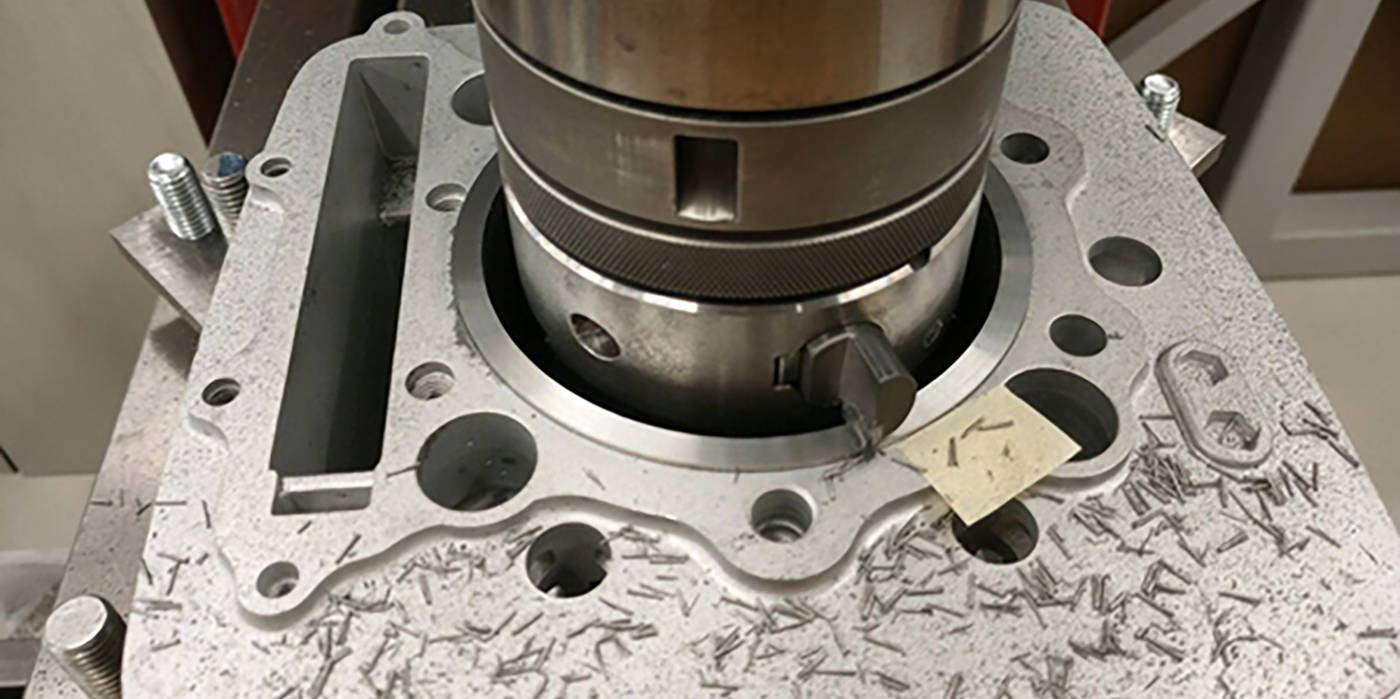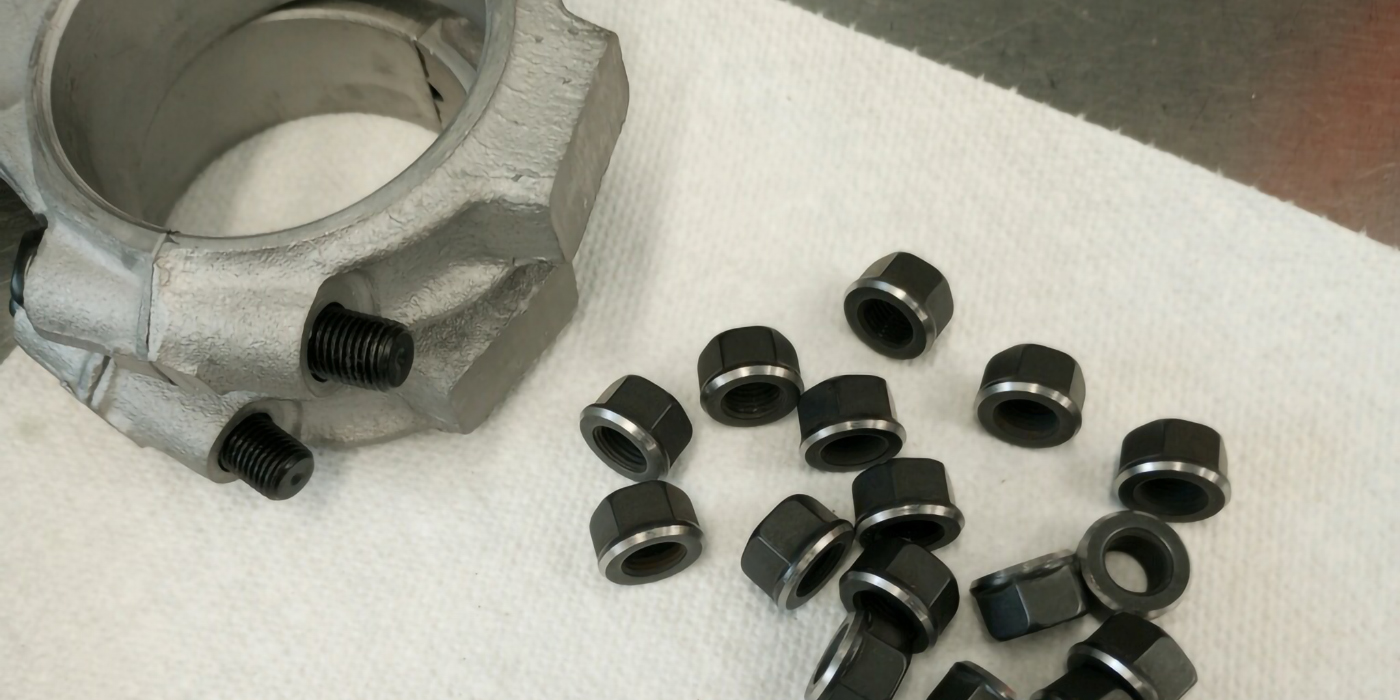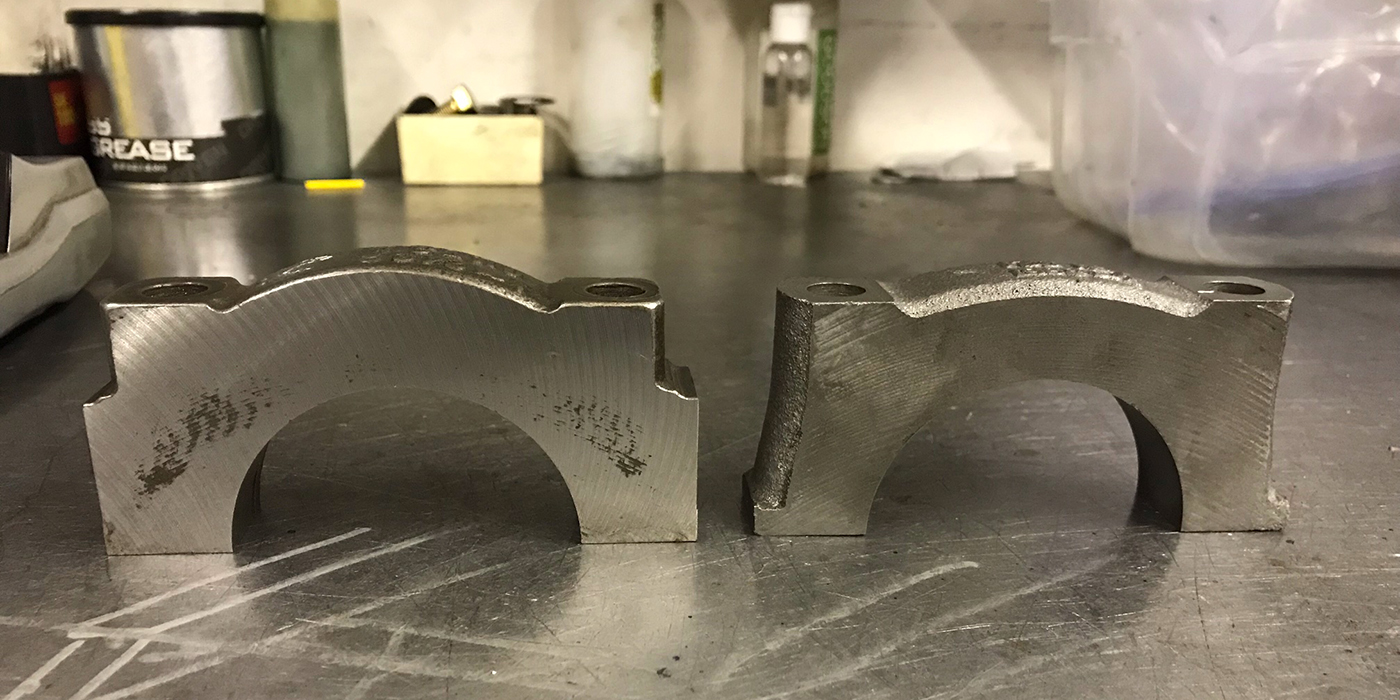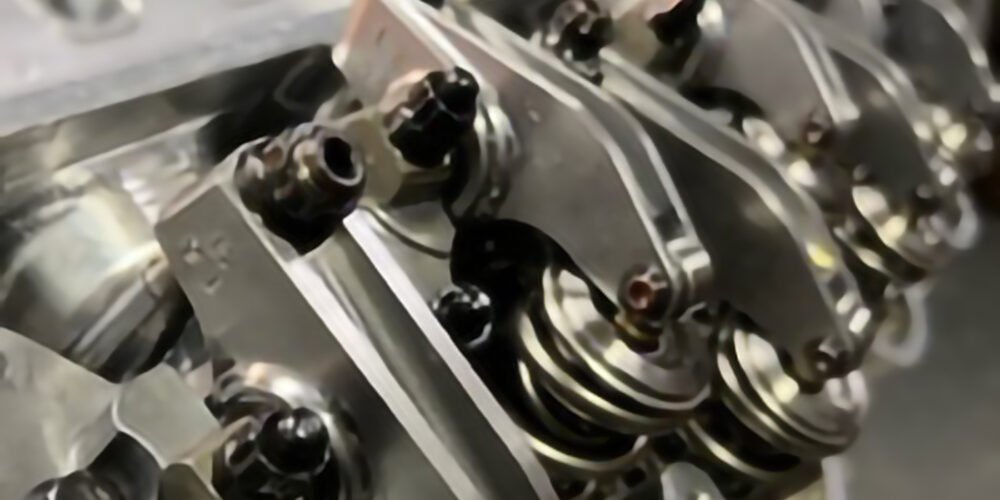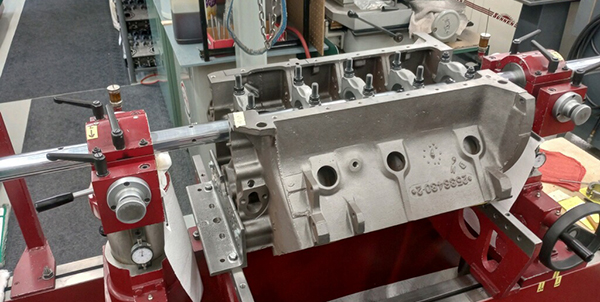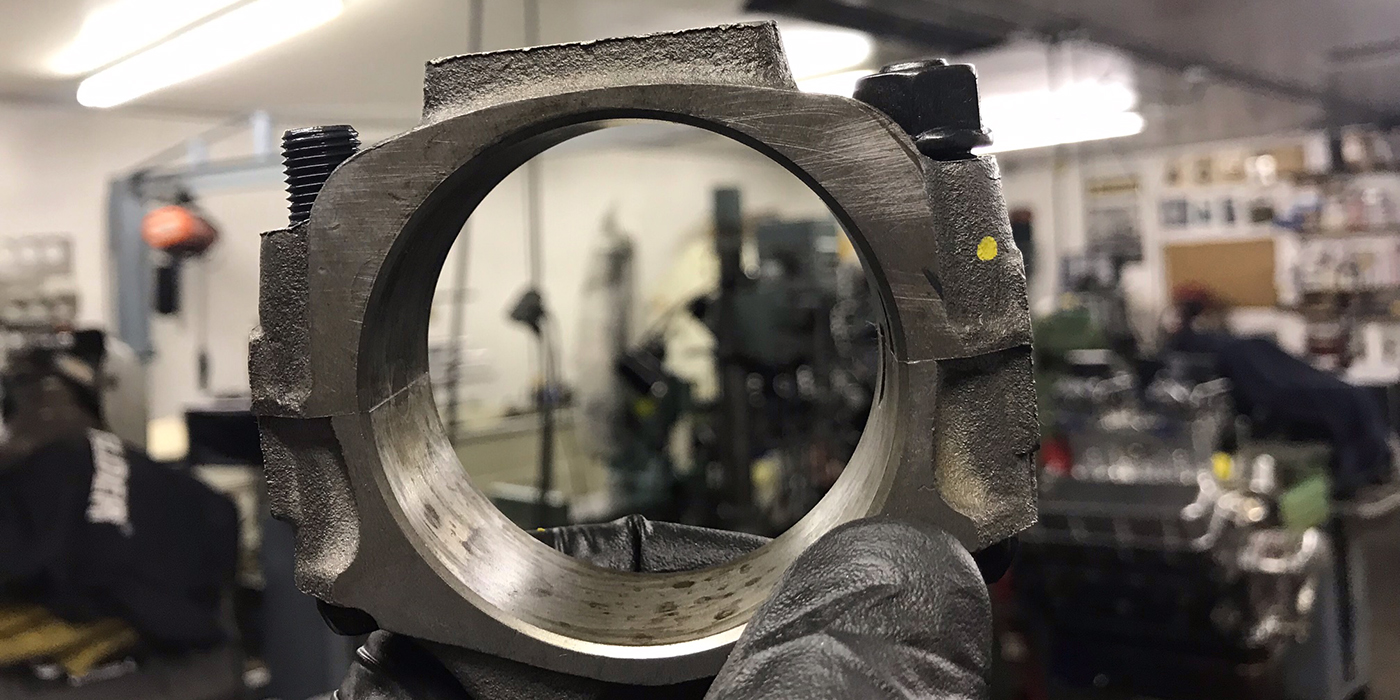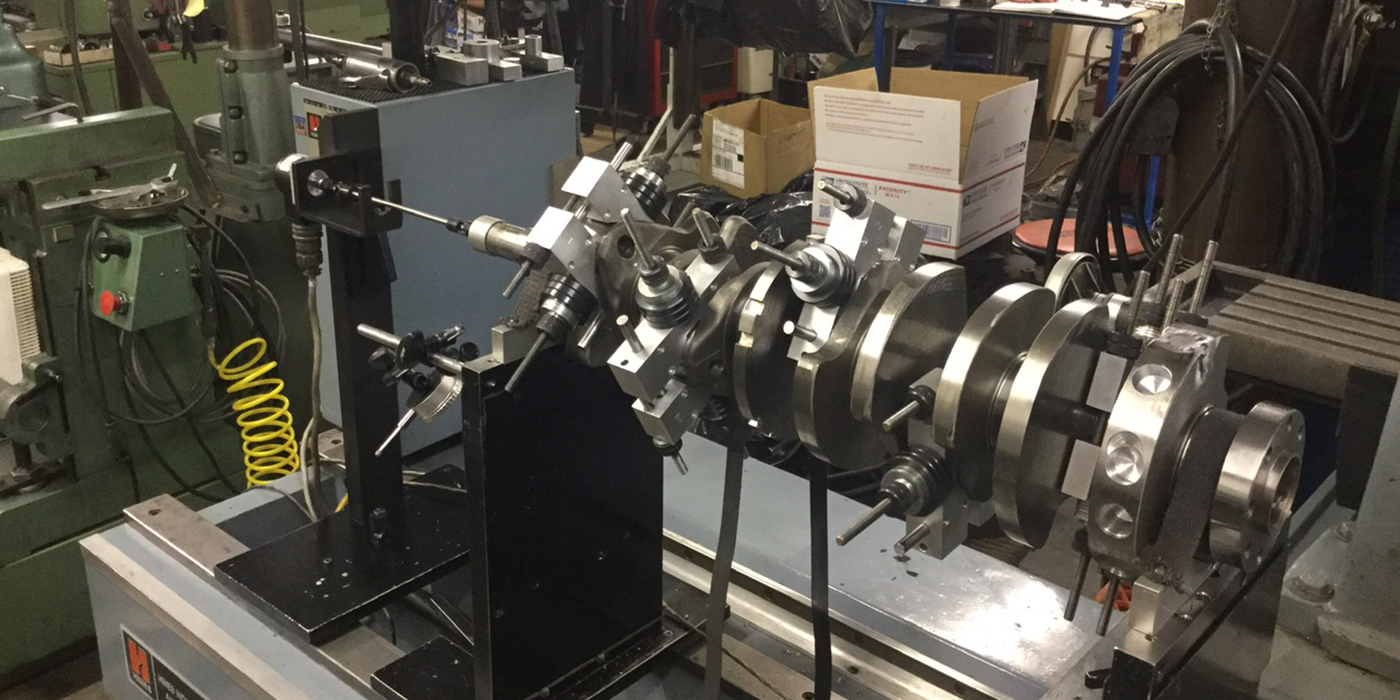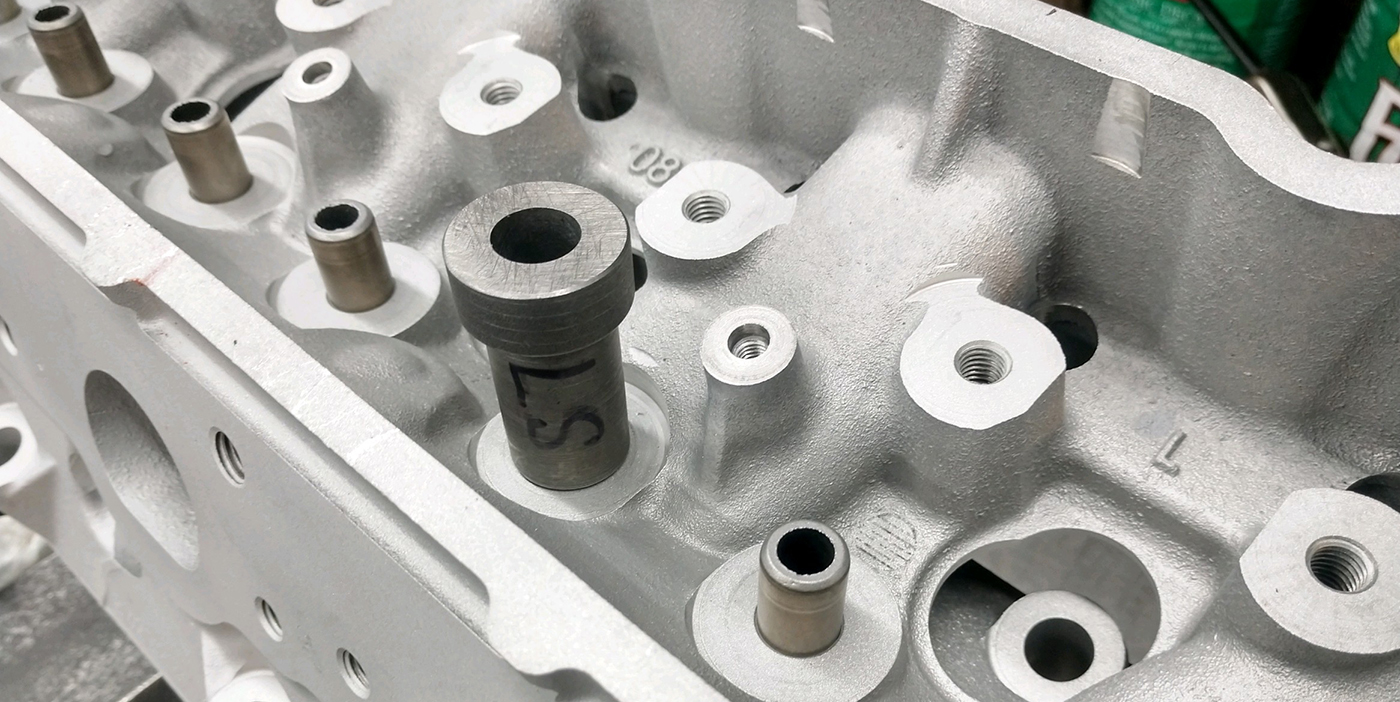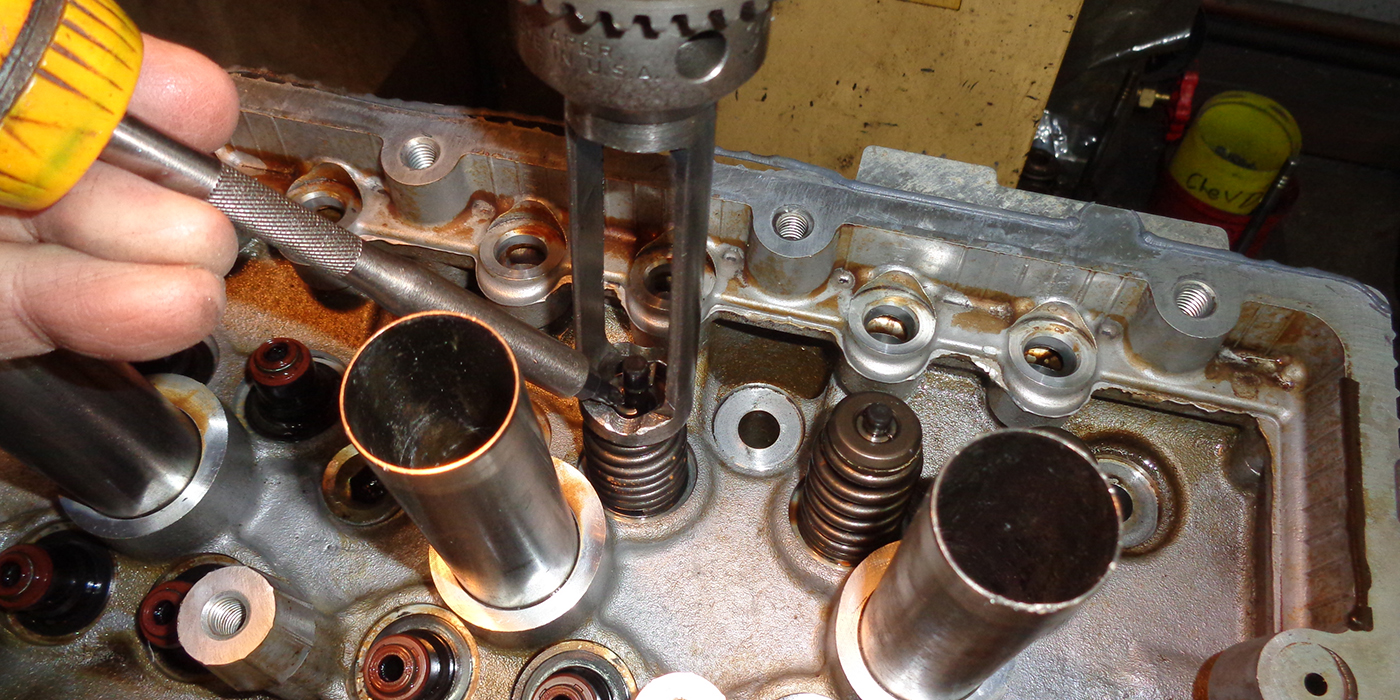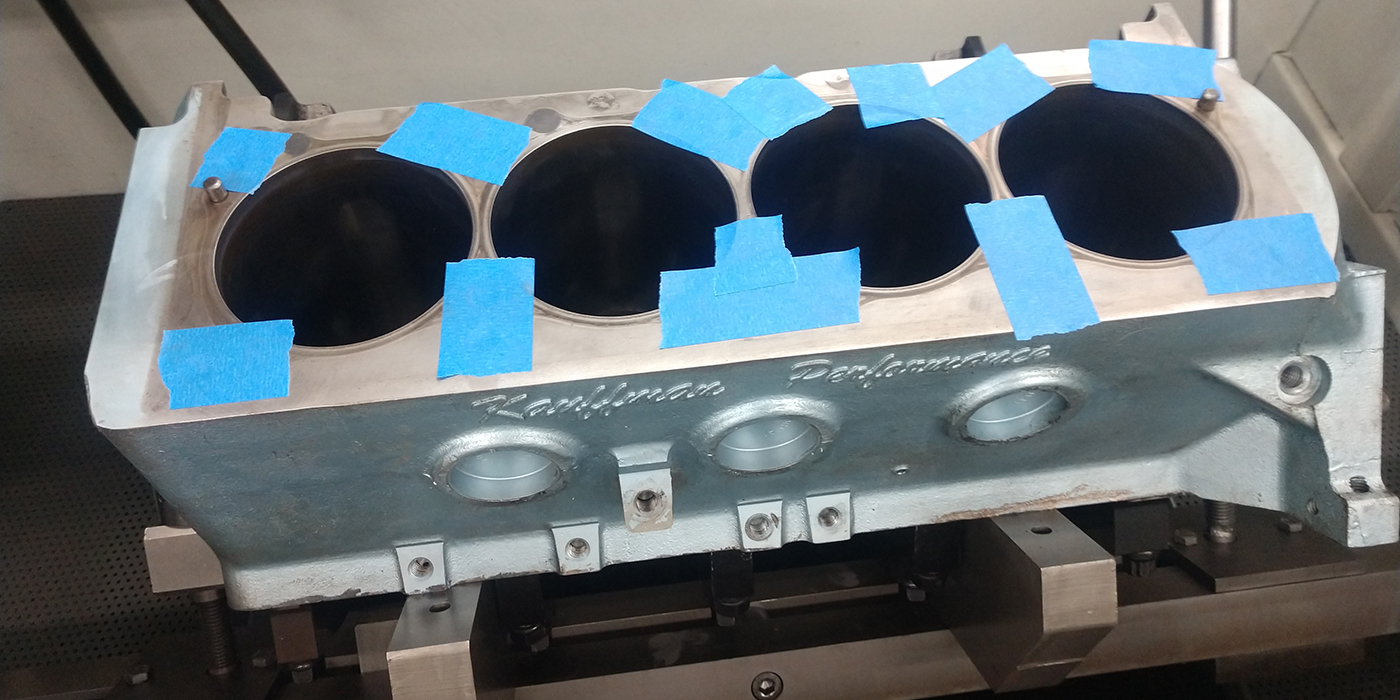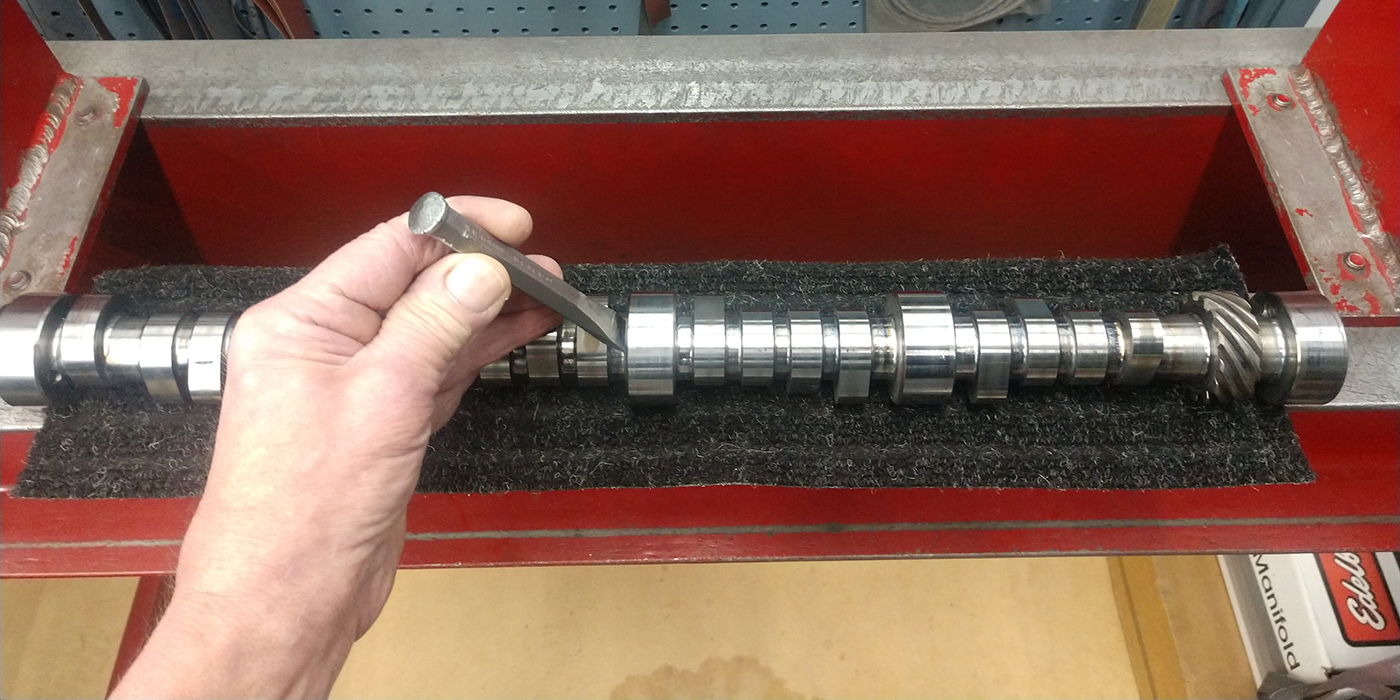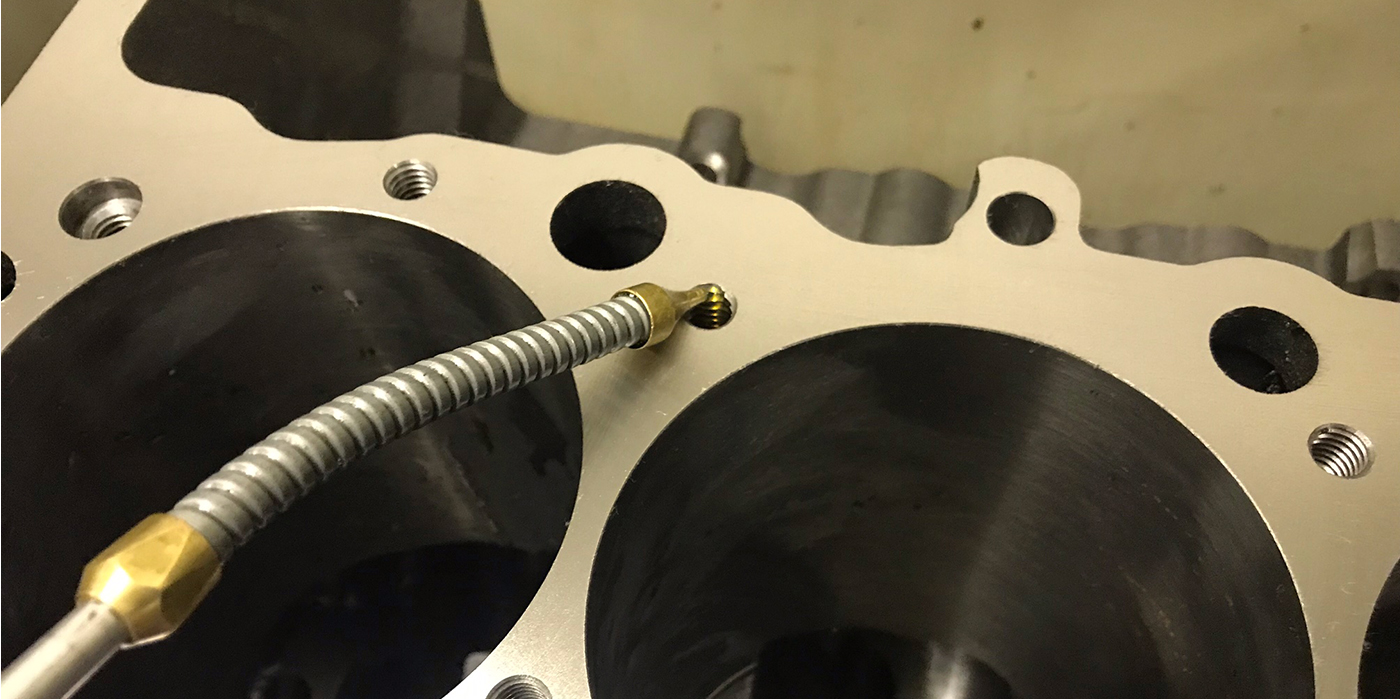Securing Cam Gears
Years ago it came to my attention that the replacement aluminum cam gear used on 4- and 6-cylinder GM inline engines has a tendency to walk off the camshaft. I wanted an easy way to resolve the problem, and here is what I came up with.
I grind a notch about 5/16? or 3/8? wide and deep on the inside front of the timing gear. Using a nickel welding rod (suitable for welding cast iron) I strike an arc on the edge of the camshaft and allow my welding bead to flow into the notch on the timing gear. Then I grind the bead down nearly flush on the front of the camshaft with an electric disc grinder. There is no interference with the timing cover, and the problem is quickly resolved.
This solution has worked for me for 15 years.
Brad Clarke
The Engine Shop
Morton, PA
Using ‘Speed Stick’ for Carburetor Gaskets
I use Chapstick all the time on carburetor gaskets to keep them from sticking. One day my neighbor came to my shop and he also brought along his yellow lab, Striker. I was doing a jet change on a Holley carb and my fruity flavored Chapstick was sitting on the bench about waist high to a human, which was about nose high to a lab.
Yup, you guessed it; the dog ate my Chapstick. Well, luckily for me, I was just at the local dollar store and had purchased some Speed Stick deodorant. I figured it looked like a giant Chapstick container and it is waxy so why not try it on my gaskets? It worked.
I can still hear the old TV commercial in my head with the choir singing at the end: “By Mennen.” I do believe that Speed Stick is less likely to be eaten by a dog than Chapstick, but that is not a guarantee!
Jeff “Beezer” Beseth
Beezer Built, Inc.
Newtown Square, PA
Easier Valve Ordering
 With all the choices of aftermarket cylinder heads and not much information on what length of valve the head uses, it helps to keep a selection of valves with different head diameters.
With all the choices of aftermarket cylinder heads and not much information on what length of valve the head uses, it helps to keep a selection of valves with different head diameters.
The length of the valve does not matter because when you mock it up you can do the match to achieve the proper length of valve for the spring height you need.
Also keep a selection of retainers and a pair of locks for the different combos you do, so when you mock up the head you will be using the same retainer and lock part numbers that will be used in the final assembly.
This will save you time and money by being certain that you will order the correct valves the first time.
Brian Benson
Dakota Parts Warehouse
Rapid City, SD
Clean Pilot Bearing Removal
Ever had to clean up the mess after filling a crankshaft hole with grease to get a pilot bearing out? I’ve found a cleaner solution. Get some modeling clay and fill up the hole until it is full. Using a long bolt with a diameter slightly smaller than the pilot bearing opening, hammer the bolt in until the pilot bearing pushes out the top.
Then clean out the modeling clay with a screwdriver and save it for next time!
Darren Karleskint
DK Motor Services
Girard, KS
Extracting Broken Bolts
Here is a broken bolt removal system that I have used with excellent results. When a bolt is broken off flush with the surface, find a nut that is the next size larger. For example, if you’re working with a 1/4? bolt, get a 5/16? nut; for a 3/8? bolt get a 7/16? nut, etc. I like to use a “thin” hex nut because it’s easier to get the welding wire down inside.
Place the nut over the broken bolt and weld the inside of the nut to the top of the bolt. When it cools a bit, squirt penetrating oil under the nut. Let it sit for a few minutes then turn the nut and broken bolt out with a socket.
Jim Kovach
Kovach & Assoc. Perf. Eng. Building
Parma, OH
Manufacturer Shop Solutions:
Replacing Piston Rings with ‘Nikasil’ Liners
Q: Should I use Scotch-Brite to break the cylinder glaze?
A: Do NOT modify the "Nikasil" cylinder bore surface with Scotch-Brite or any other material or method. The coating is very thin and the exposed silicon can be fragile. I’m concerned that if the rings are being replaced that the cylinder bore and/or pistons may also require replacement as piston-to-bore clearance is critical.
Q: What kind of oil and how much should I place on the piston and rings during assembly?
A: Use the standard recommended engine oil. Special lubrication is not necessary for pistons and rings. Use enough oil to fully lubricate the ring grooves, piston skirt and piston pin.
Q: What kind of break-in is needed for new rings on an existing bore?
A: Follow the standard break-in schedule recommended by the original manufacturer.
Ira S. Rosenberg
Director of Engineering
Hastings Manufacturing Co.
Hastings, MI
Measuring Piston-To-Valve Clearance
When checking for piston to valve clearance, always check with the proper valve lash, not zero lash. Doing so will save cutting pistons when not necessary. The addition of correct valve lash changes the point where the lifter picks up the cam and greatly shortens the duration at the valve.
Big duration cams on close lobe separations have more overlap that creates tight piston to valve issues. Wider lobe separation cams have less overlap and typically fewer clearance issues. Total valve lift is not as critical as the overlap, because the piston is closer to the cylinder head at overlap.
When in doubt, call the manufacturer for recommendations regarding your specific applications. Specifications supplied with pistons are fairly general. Technical advisors are available to help you get the most performance and reliability possible from your specific combination. And the advice is free!
Randy Gillis
Technical Sales
JE Pistons
Huntington Beach, CA
Engine Builder Shop Solutions is sponsored by Engine Pro,
a consortium of 9 engine parts specialist WDs operating 30 branch
locations serving engine builders/rebuilders across the U.S. Shop
Solutions published in each issue of Engine Builder Magazine are
awarded a $100 Visa Gift Card. Winners will be chosen by
the staff of Engine Builder Magazine and the Engine Pro Technical
Committee.
To submit a Shop Solution simply mail your entry
to Engine Builder Magazine, Shop Solutions, 3550 Embassy Parkway,
Akron, OH 44333; or email to Shop [email protected]. Shop
Solutions may also be emailed to [email protected].
You must include
your name, shop name, shop address and shop telephone number. Submitted
Shop Solutions not published will be kept on file and reevaluated for
publication with each month’s new entries. If you include your email
address you will be emailed notification of publication if your Shop
Solution is chosen.


